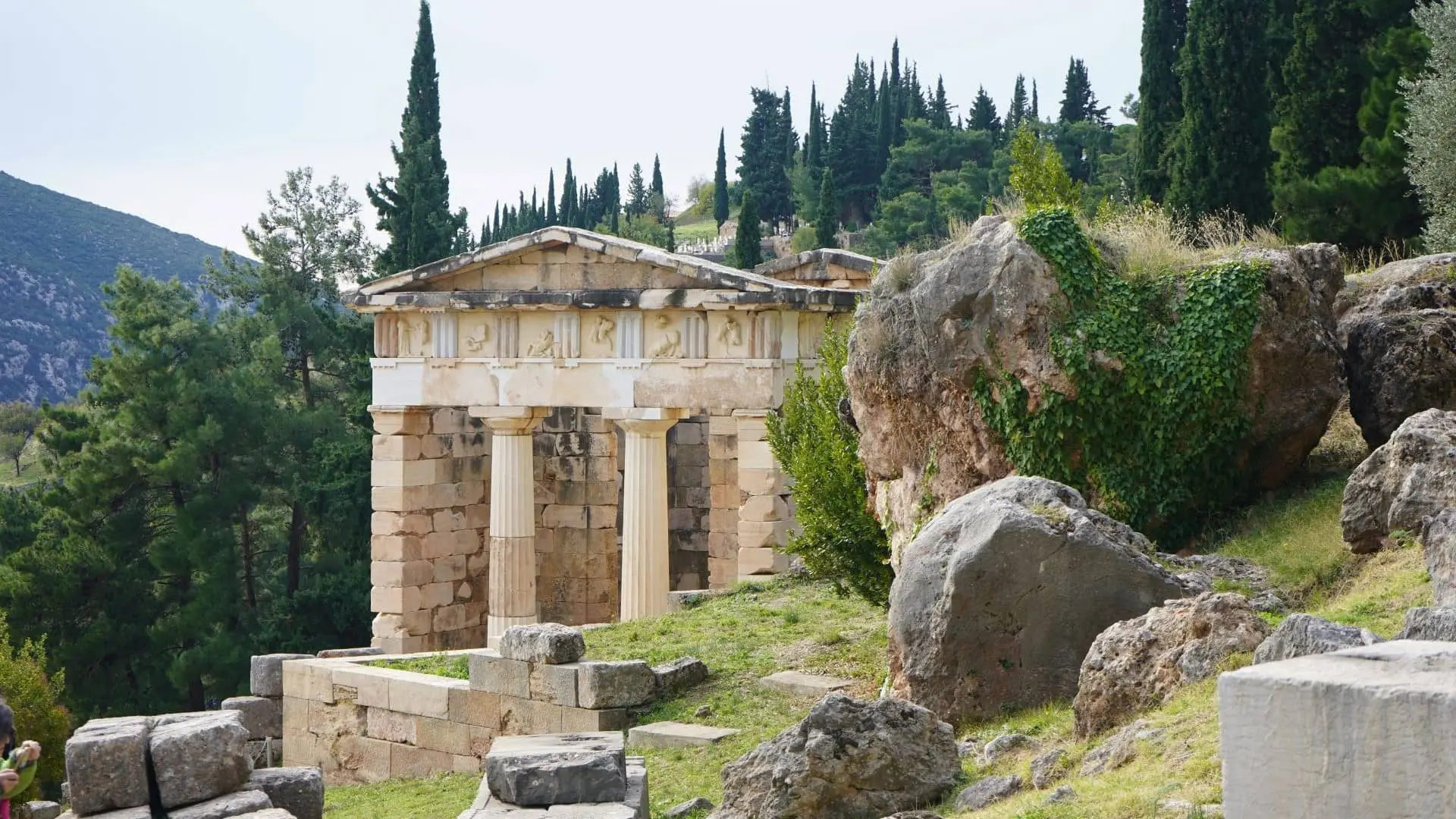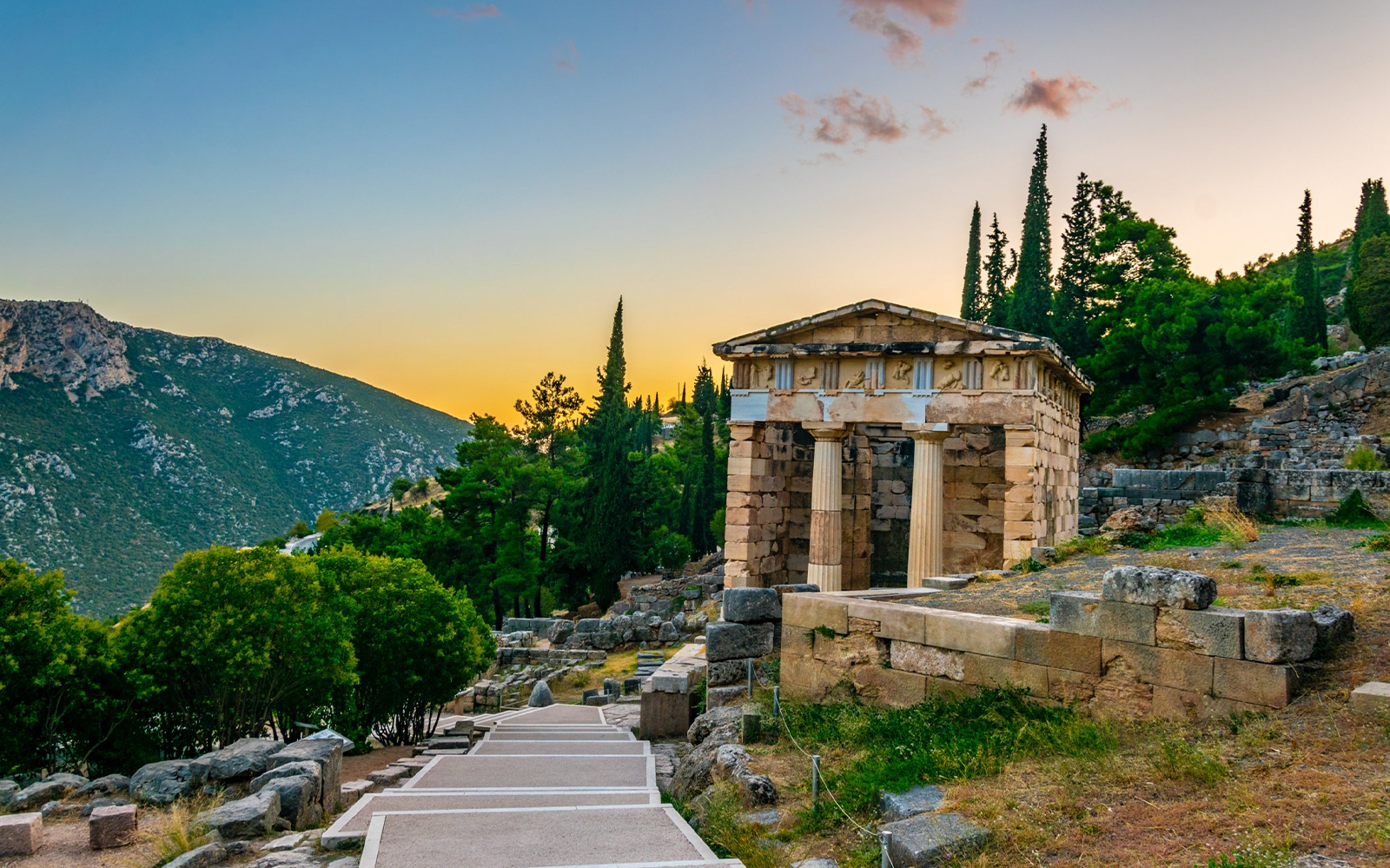The Athenian Treasury at Delphi is one of the most remarkable historical monuments from ancient Greece. Constructed in the 5th century BC, it served as a symbolic and physical repository for offerings made by the Athenians to Apollo, the god of prophecy and oracles. Located in Delphi, one of the most revered sanctuaries of the ancient world, this structure reflects the deep intertwining of religion, politics, and culture in ancient Athens.
The Athenian Treasury in the 5th Century BC
In the 5th century BC, the Athenian Treasury stood as a dazzling example of Doric architecture. Made entirely from Parian marble, the building was constructed to celebrate Athens’ monumental victory over the Persians at the Battle of Marathon in 490 BC, a pivotal moment in the Greco-Persian Wars. The Athenians built the treasury as an expression of gratitude to Apollo for his perceived protection during the conflict, but it also stood as a testament to the military prowess and cultural grandeur of Athens.

The treasury was filled with valuable offerings, including statues and other votive objects that represented the wealth and piety of Athens. Its walls were adorned with intricate sculptural reliefs, most notably depicting the heroic labors of Heracles and Theseus, two legendary figures central to Athenian identity. These carvings not only served a religious purpose but also acted as a form of civic pride, illustrating the Athenians’ belief in their heroic lineage and divine favor.
The Athenian Treasury Today
Today, the Athenian Treasury at Delphi has been restored, offering visitors a glimpse into the splendor of ancient Greek architecture. While it no longer houses the treasures it once protected, the treasury’s reconstruction, completed in the early 20th century, preserves much of its original grandeur. This restoration allows modern-day visitors to experience the same awe that ancient pilgrims would have felt as they approached the sanctuary.

Delphi itself, located on the slopes of Mount Parnassus, was regarded as the center of the world in ancient Greek cosmology. The sanctuary of Apollo housed the famous Delphic Oracle, where people from across the Mediterranean came to seek prophetic guidance. The Athenian Treasury’s strategic location within this sacred site underlines its importance not only as a storage place for riches but as a marker of Athenian power and influence during the height of classical Greece.
Then and Now: Analyzing the Transformation
The transformation of the Athenian Treasury over the centuries is a reflection of the evolving meaning of ancient monuments. In the 5th century BC, it stood as a symbol of Athenian dominance. Its construction was a way for Athens to assert its military success and cultural superiority, with the treasury acting as a form of political and religious propaganda. The depiction of mythical heroes and the inclusion of offerings were designed to cement Athens’ status as a leading city-state in Greece.

In contrast, the treasury today serves more as a historical relic, stripped of its treasures but still rich in cultural significance. Visitors to the site can walk the same paths as ancient pilgrims and stand before the treasury as those in antiquity once did. The structure’s current role is educational, offering insights into the religious practices, architectural advancements, and artistic achievements of classical Greece.
Conclusion: A Monument to Enduring Legacy
The Athenian Treasury at Delphi is more than just an ancient building; it is a testament to the triumphs, ambitions, and aspirations of ancient Athens. Its transition from a treasure house of offerings to a restored monument underscores the enduring significance of the site. Today, it stands not only as a symbol of Athens’ military and cultural achievements but also as a reminder of the ancient Greeks’ profound connection to their gods and the sanctuaries they held sacred.
Even in its restored state, the Athenian Treasury continues to inspire and educate, offering modern visitors a tangible connection to the ancient world and its lasting influence on Western civilization.

